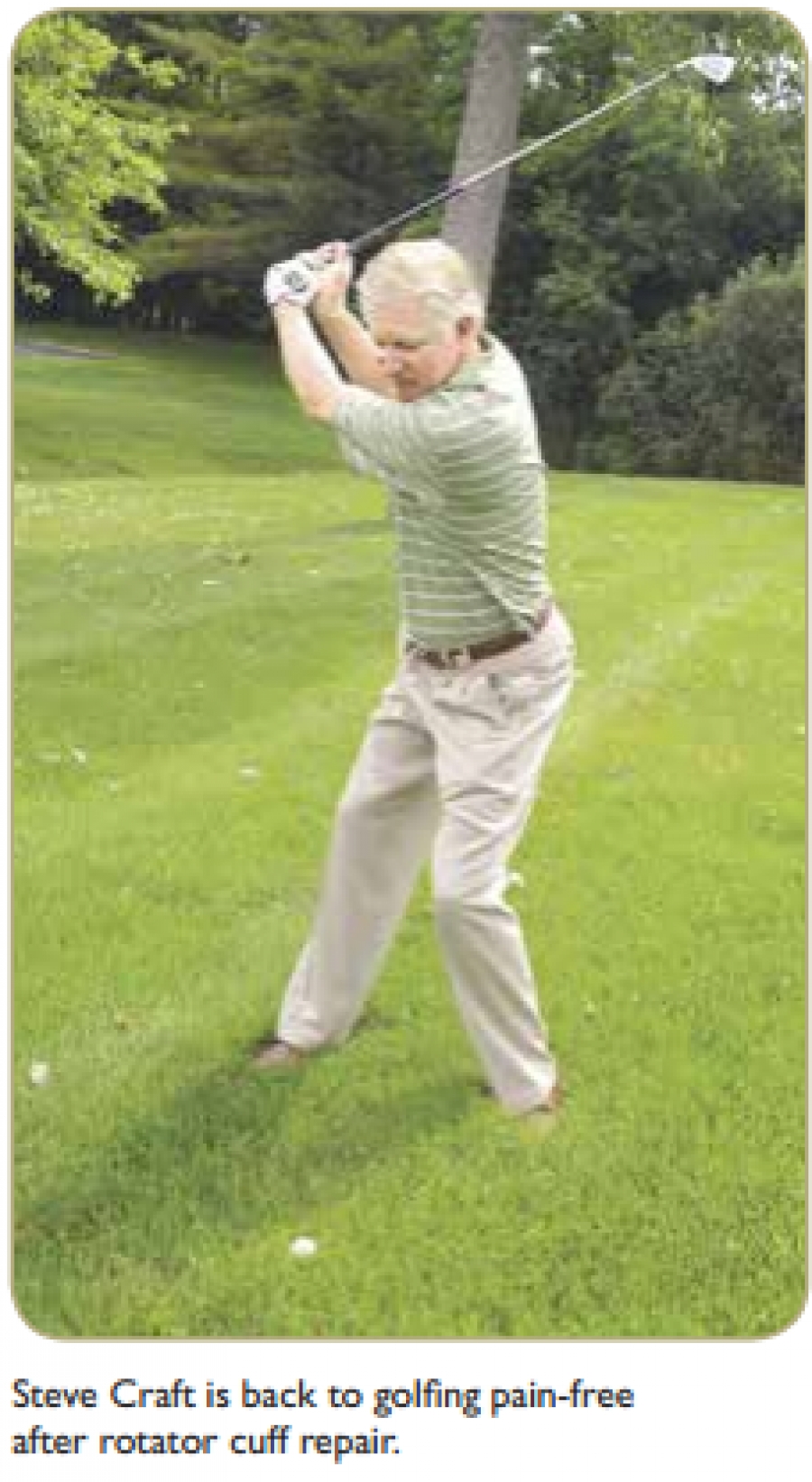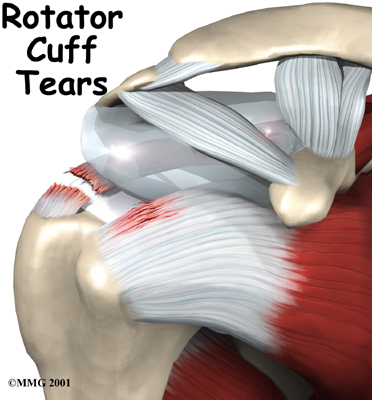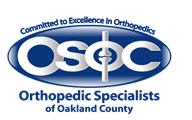
SHOULDER PAIN HURTING YOUR GOLF GAME
Dr. Bahu talks about shoulder pain related to your golf game
With the growing popularity of golf, physicians specializing in the musculoskeletal system are seeing more golf related injuries.
Shoulder problems in golf are common because the rotator cuff muscles and their tendon are very active throughout a golf swing. Inflammation of the rotator cuff tendon, called tendinitis, and even tears can occur.
The rotator cuff is a tendon that is made up of four muscles. This tendon attaches to the humerus (ball) of the shoulder, as seen in the picture to the right. As arms are lifted, the soft rotator cuff tendon is pinched between two hard bones. This
is called rotator cuff impingement and can lead to tendinitis, bursitis and even rotator cuff tears (where the tendon is no longer attached to the humerus).

Rotator cuff tears are common and can lead to pain and an inability to lift the arm, as well as often causing a reduction in physical activities. As more and more athletes are remaining active beyond their 40s and 50s, they no longer accept shoulder pain as a good reason to give up the sports they enjoy. Clarkston resident Steve Craft is an example of this.
According to Matt Bahu, MD, a St. Joseph Mercy Oakland (SJMO) orthopedic surgeon, Craft came to his office with shoulder pain that hindered his ability to participate in the sport many people refuse to give up—golf. “Rotator cuff disease is the most common cause of shoulder pain,” Dr. Bahu says, “but not everyone has a rotator cuff tear. Almost all of the time, I begin treating shoulder pain without surgery.” Craft was no different. He started his treatment with non-operative methods first to see if he could get back to golfing without surgery.
“I was able to control his pain enough to get him through a season,” says Dr. Bahu. “But he could tell that something was just not right."
“As the golf season started winding down, he returned to my office seeking a more permanent solution,” says Dr. Bahu. “An MRI of his shoulder confirmed that he had a rotator cuff tear. Rotator cuff repair was offered as a permanent solution to his shoulder pain.”
Repairing a rotator cuff involves attaching it back to the humerus with sutures. This can be performed arthroscopically using minimally invasive technology through small incisions via a camera.
Dr. Bahu states, “This technique is associated with less pain, less risk of frozen shoulder and less risk of complications than the traditional open technique.” Patients must allow time for the tendon to heal back to the ball of the shoulder.
Craft was able to return to chipping and putting in four months, and he could drive the ball off a tee with a full swing in six months.
Craft now enjoys a pain-free life and is able to golf without thinking about his shoulder. He spends his summers out on the links with his son.



